Do you have a question about the Samsung C22F390FH series and is the answer not in the manual?
Guidelines for product ventilation, placement, and storage to prevent damage or hazards.
Explains electrical shock risks, user serviceability, and cautionary symbols used in the manual.
Instructions for safe cleaning and important electrical safety precautions during product operation.
Warnings and cautions for safe product installation, including placement and environmental factors.
Critical safety warnings for operating the monitor, covering high voltage, handling, and external substances.
Cautions regarding screen settings, eye health, accessory storage, and physical handling during use.
Identifies key physical components of the monitor and explains the control panel layout and JOG button functionality.
Explains the function of shortcut buttons for quick access to settings like Brightness, Volume, and Eye Saver Mode.
Details how to navigate menus and use function keys for input selection, OSD control, and mode activation.
Describes how the JOG button functions differently in power-saving mode and when accessing the main menu.
Guides users on adjusting brightness, contrast, sharpness, and volume directly using the JOG button.
Illustrates and identifies the various input/output ports located on the rear of the monitor for connectivity.
Provides instructions and diagrams for safely adjusting the tilt angle of the monitor screen.
Explains how to attach an anti-theft locking device to secure the monitor in public places.
Outlines safe practices for handling and moving the monitor to prevent screen damage or personal injury.
Details the process of installing a wall mount and provides VESA specifications and safety warnings.
Step-by-step guide for attaching the monitor stand to the base for specific product models.
Step-by-step guide for attaching the monitor stand to the base for a different set of product models.
Instructions for safely detaching the monitor stand from the base for specific product models.
Instructions for safely detaching the monitor stand from the base for a different set of product models.
Essential checks before connecting devices and guides for connecting a PC via D-SUB cable.
Instructions for connecting the monitor using HDMI/DVI and DisplayPort cables for video and audio.
Explains how to connect headphones and the power adapter for monitor operation.
Advises on proper posture for use and the process of installing necessary monitor drivers.
Guides on how to set the optimal screen resolution for the monitor after initial setup.
Explains how to use MAGIC Bright to optimize picture quality based on environment and input mode.
Details how to adjust brightness, contrast, and sharpness settings for optimal image clarity and appearance.
Covers color tint adjustments, color temperature presets, and gamma settings for fine-tuning image colors.
Explains MAGIC Upscale for enhancing detail and HDMI Black Level for image quality correction.
Guides on enabling Eye Saver Mode for reduced eye strain and Game Mode for optimized gaming visuals.
Instructions on adjusting response time to improve motion clarity in videos and games.
How to change picture size and aspect ratio for PC/AV modes, including screen fit options.
Covers screen positioning, frequency adjustment, and fine-tuning for analog mode.
How to adjust the transparency and position of the On-Screen Display (OSD) menu windows.
Setting the OSD menu language and configuring how long the menu remains visible after inactivity.
Explains FreeSync technology for eliminating screen tearing and lag, including modes and compatibility.
Lists compatible AMD graphics cards and how to enable FreeSync in AMD Radeon settings.
Features for reducing power consumption (Eco Saving Plus) and setting automatic power-off timers.
How to switch between PC/AV modes and configure automatic or manual source detection.
Configuration of the key repeat response rate for button presses.
Settings to enable or disable the power LED indicator and its status (working/stand-by).
Instructions to restore all product settings to their original factory defaults.
How to view current input source, frequency, resolution, and product serial number.
Information about Easy Setting Box for partitioning monitor sections and its system requirements.
Potential issues and restrictions that may affect the installation of the Easy Setting Box software.
Steps to test the product and check basic requirements before contacting customer service for support.
How to diagnose and resolve issues related to unsupported screen resolutions and refresh rates.
Troubleshooting steps for common PC connection problems like screen switching or blank spaces.
Solutions for distorted images, blurriness, screen instability, brightness, and color inconsistencies.
Troubleshooting steps for choppy video playback and audio problems, including connection types.
Addresses issues where a beeping sound occurs during PC boot-up.
Frequently asked questions on changing refresh rate, screen resolution, and configuring power-saving modes.
Provides detailed specifications for various models, including size, pixel pitch, power, and signal connectors.
Details Plug-and-Play compatibility, pixel nature, and disposal information for unwanted electronics.
A table outlining supported resolutions, frequencies, and pixel clocks for different monitor models.
Further details on signal modes, frequency definitions, and recommendations for optimal picture quality.
Outlines conditions for service charges, customer responsibilities, and warranty exceptions.
| Screen Size | 21.5 inches |
|---|---|
| Aspect Ratio | 16:9 |
| Refresh Rate | 60 Hz |
| Response Time | 4 ms (GTG) |
| Brightness | 250 cd/m² |
| Curvature | 1800R |
| VESA Mount | 75 x 75 mm |
| Resolution | 1920 x 1080 (FHD) |
| Contrast Ratio | 3000:1 (Static) |
| Connectivity | 1 x HDMI, 1 x D-Sub |
| Color Support | 16.7 million colors |
| Stand Adjustments | Tilt (-2° to 20°) |
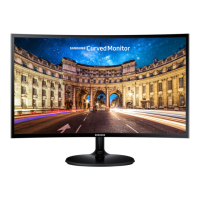
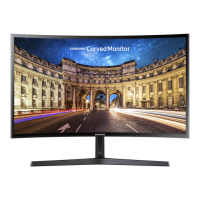
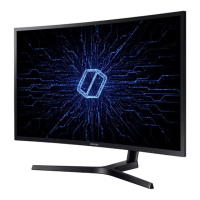
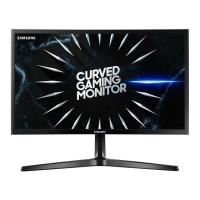
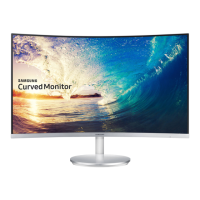

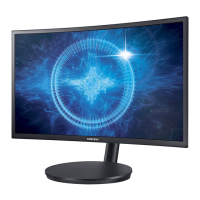


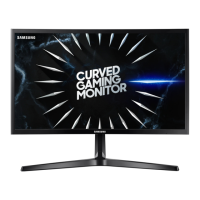
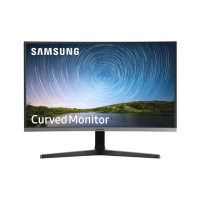

